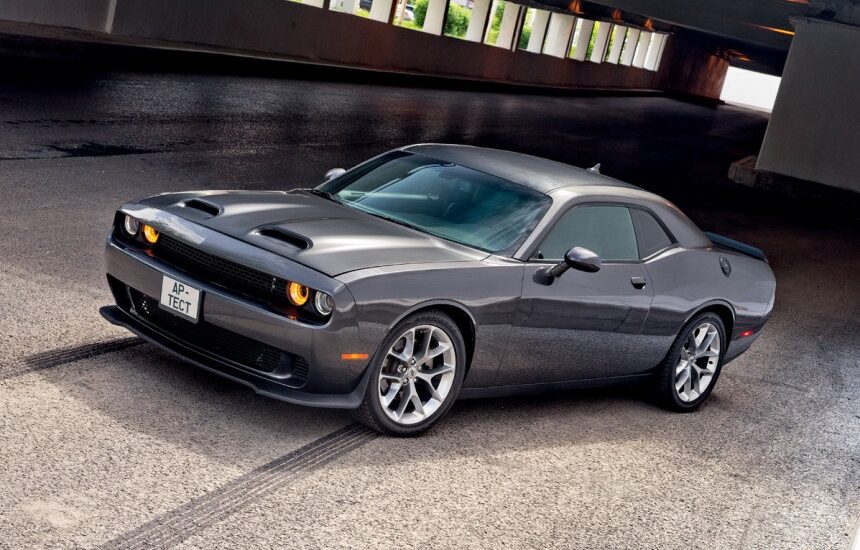Auto Review’s editorial team, with a hint of irony, decided to assign the farewell piece for the recently discontinued Dodge Challenger to a writer who has been driving a Tesla for the past two years. Perhaps, that might make it more intriguing? After all, I spent nearly a week driving this black Dodge, pondering whether it was time to sing a requiem for the V8, or if its era had indeed passed.
Ask me to describe a typical muscle car, and I’d tell you it’s big, heavy, archaic, and somewhat sluggish. Yet, it roars so fiercely that birds in nearby forests tumble from their branches—a cliché, indeed. With this backdrop, creating an engaging article seemed daunting. Therefore, I dove into Auto Review’s archives for some foundational material and… found nothing. Pages had chronicled the Chevrolet Camaro (which was officially sold in Russia for a time) and Ford Mustang, but the Dodge Challenger had never garnered such attention. Thus, this farewell piece is also a debut article—for the magazine and personally for me.
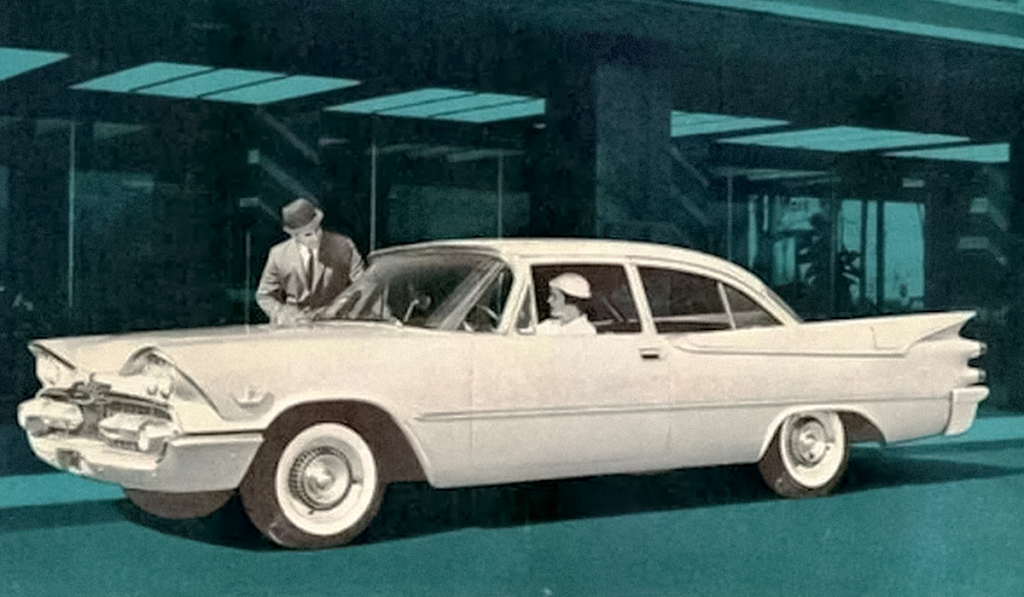
The Challenger name first appeared in 1959: the two-door Dodge Silver Challenger sedan was just a special version of the Coronet model.

The first generation Dodge Challenger (1969-1974) was offered with inline sixes (3.2-3.7 l) and V8 engines (5.2-7.2 l). 165 thousand cars were produced.
This oversight is telling. The original Challenger from the seventies remained in the shadows of its ‘big three’ American competitors throughout its brief existence. It debuted five years after the Mustang and three years after the Camaro. It was as futile as arriving for mushroom hunting at noon. While Ford and Chevrolet basked in financial success, Dodge struggled to sell 165,000 units over five years before discontinuing the model—a stark contrast to the Mustang’s annual sales figures at that time.
The fuel crisis of the seventies saw the second-generation Challenger reflect the dismal era, emerging as a dreary badge-engineered version of the compact Mitsubishi Galant Lambda. Equipped with modest four-cylinder engines ranging from 1.6 to 2.6 liters, coupled with a five-speed manual or three-speed automatic, it resembled more of a soup kitchen offering than a muscle car. After five years of ignominy, the Challenger vanished from Dodge’s lineup for a quarter century, only to be revived in a renaissance.
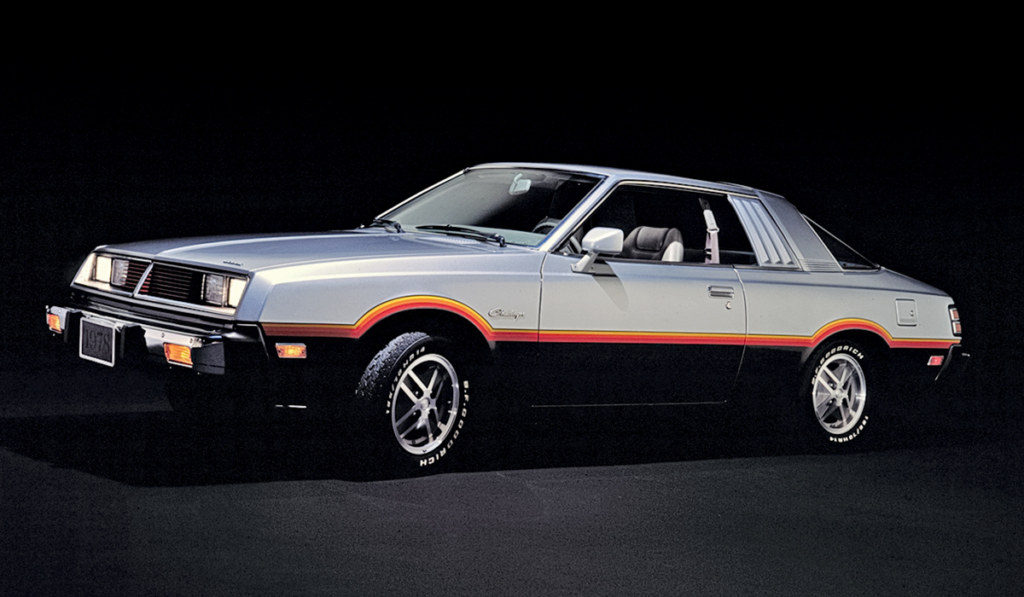
The second generation Dodge Challenger (1978-1983) was produced in Japan. During its entire production run, 107 thousand cars with four-cylinder 1.6 and 2.6 engines were sold.
The early 21st century was a golden era for global automotive manufacturing, marked by homages, remakes, and tributes. It began with European compacts like the Volkswagen Beetle and Mini, but the Americans responded admirably: Chevrolet with the SSR and Camaro, Chrysler with the PT Cruiser and Crossfire, and Ford with the Mustang and GT. These were not just bold moves—they were statements.

This 2006 concept evolved into the production Dodge Challenger with minimal changes. Production at a plant in Canada began in the spring of 2008.
The Dodge Challenger was part of this revival. Yet again, it was introduced four years after the latest Mustang. However, its development was far from scratch. The third-generation Challenger was built on the shortened LX platform, also used for the Chrysler 300, Dodge Magnum, and Dodge Charger. This platform was itself a product of the failed DaimlerChrysler merger, which aimed to synergize German and American automotive engineering. Thus, it featured front suspension from the Mercedes-Benz S-Class (W220) and rear suspension from the E-Class (W210), among other borrowings.
The Challenger impresses with its size, just a few centimeters shorter than the S-Class (W220) and nearly seven centimeters wider. Believe me, that’s substantial! A two-door coupe the size of a luxury sedan inherently commands presence. And when its size is paired with a retro design styled after the iconic first-generation Challenger, which had achieved cult status by the new millennium, the impact multiplies.

While the Mustang and Camaro evolved into more refined vehicles over the years, the Challenger remained true to its origins, eschewing significant restyling. Its bold aggression, hood scoops, and high beltline with a sharp rise towards the rear pillar were not just elements of a car but a veritable concentration of testosterone. Owning and enjoying this Dodge required a fair amount of courage.
Of course, the experience varied by model. The Challenger offered nearly as many variants as there are NBA teams. The entry-level models featured naturally aspirated V6 engines ranging from 253 to 309 horsepower, interestingly only becoming available with all-wheel drive post-2017—a token gesture at best.
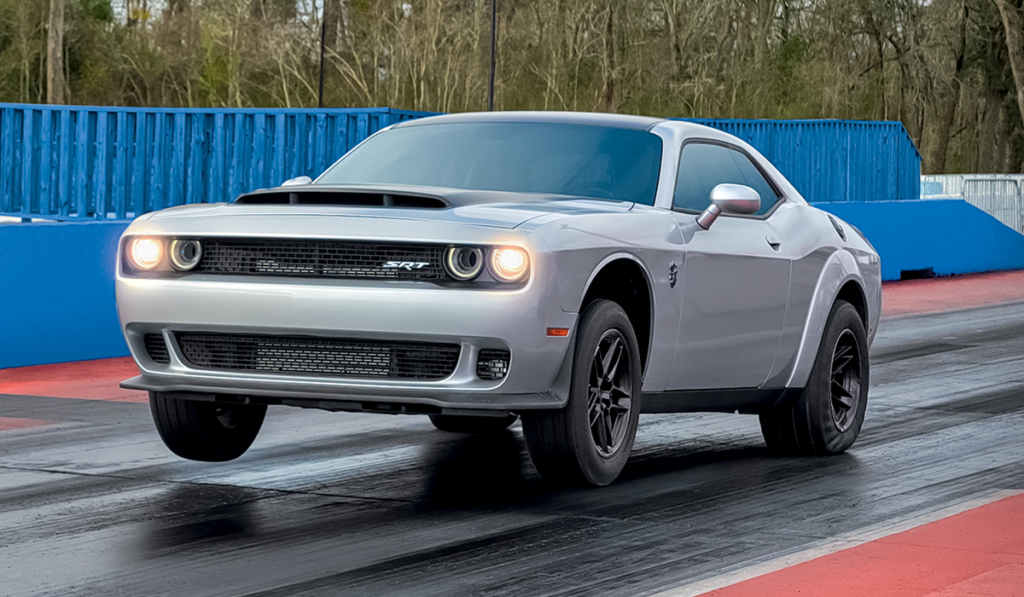
The farewell Dodge Challenger SRT Demon 170 became the most powerful in the range: on a mixture of E85, the supercharged V8 produces up to 1039 hp. 3300 of these road dragsters were produced.
The conversation gets serious with the R/T (Road and Track) version, equipped with the canonical 5.7-liter V8 Hemi engine delivering from 377 horsepower. Higher up the ladder were models with a naturally aspirated 6.4-liter V8, offering up to 485 horsepower. The 2015 SRT Hellcat version marked a quantum leap with its supercharged 6.2-liter V8, pumping out at least 717 horsepower. And the wildest factory Challenger boasted an astonishing 1039 horsepower!
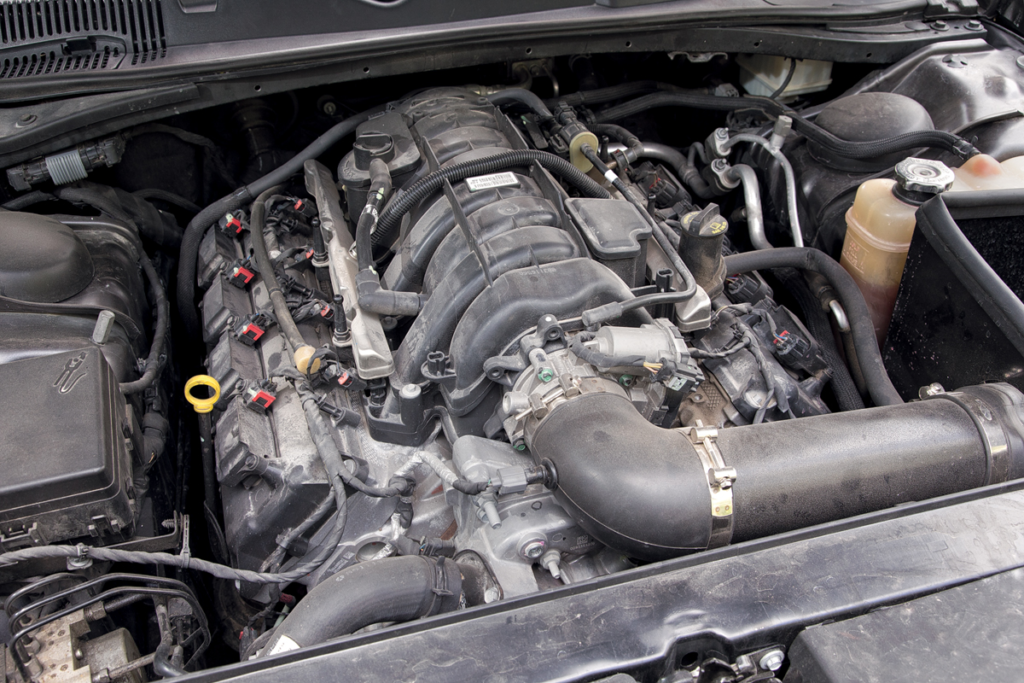
The black Dodge Challenger from the autobnb car rental service was a 2021 R/T model. Imported as a used car from America, it had been modestly tuned: a K&N zero-resistance intake filter, Magnaflow resonators and tips on the exhaust, plus a Stage 1 tune. All these modifications boosted the power of the V-shaped “eight” from 377 to about 405 horsepower. Once impressive, such figures today…
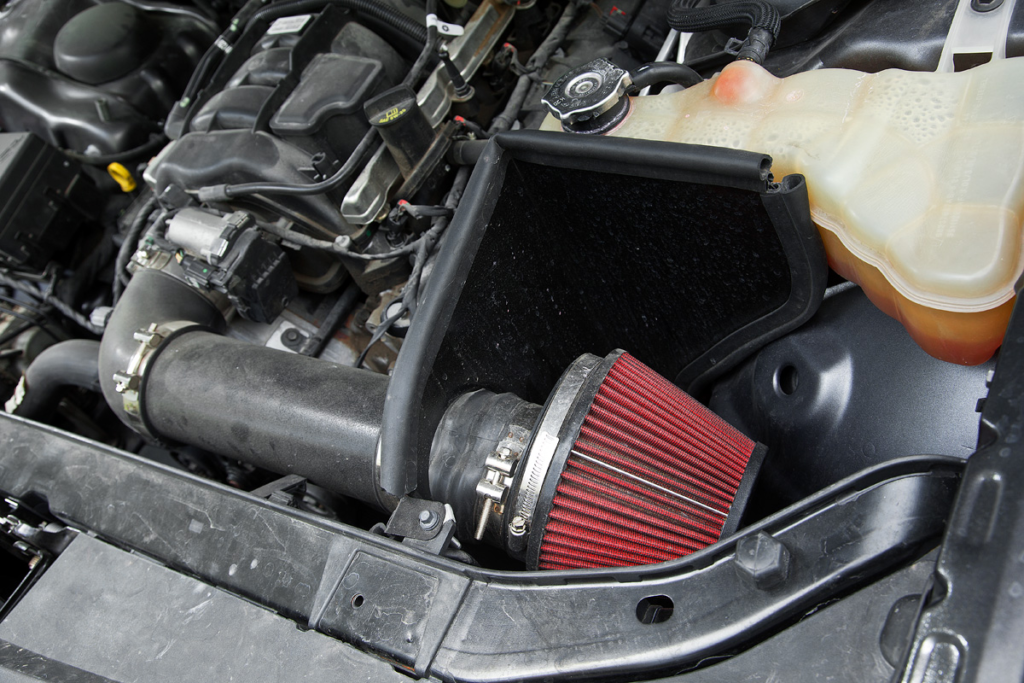
Electric vehicles have rapidly diminished the allure of high horsepower and performance specs. And recalling that the standard Dodge sprints to 100 km/h in five and a half seconds, the old stereotypes generally hold: it’s big, heavy, and not particularly quick. But if the stars are lit, it means there is something worth exploring. And the first surprise occurred inside the cabin.

I expected to find a primitive, if not outright dull, interior equipped with nothing more than cup holders. But the Dodge Challenger is far from that. It boasts a pleasing design, the infamous soft-touch plastic, and a multifunction steering wheel—giving it the feel of a modern car, at least in the T/A (Trans Am) trim. This trim includes the Uconnect media system with a large (ha-ha!) 8.4-inch monitor, memory seats with ventilation, dual-zone climate control, a heated steering wheel, an Alpine audio system, and other desirable options. Basically, all the gentlemanly essentials are present.
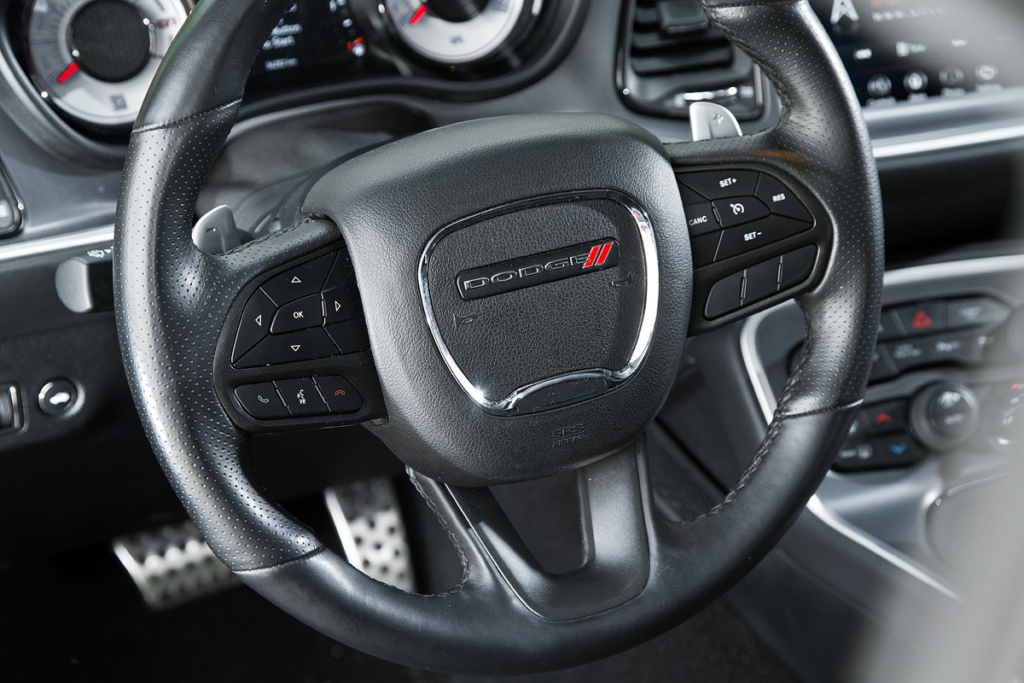
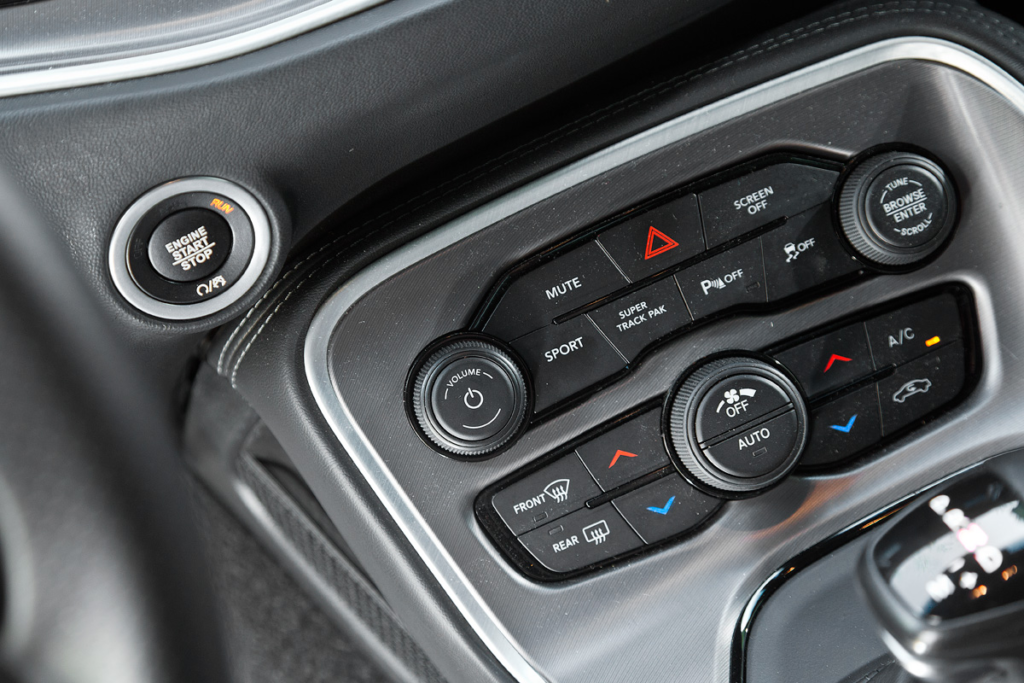
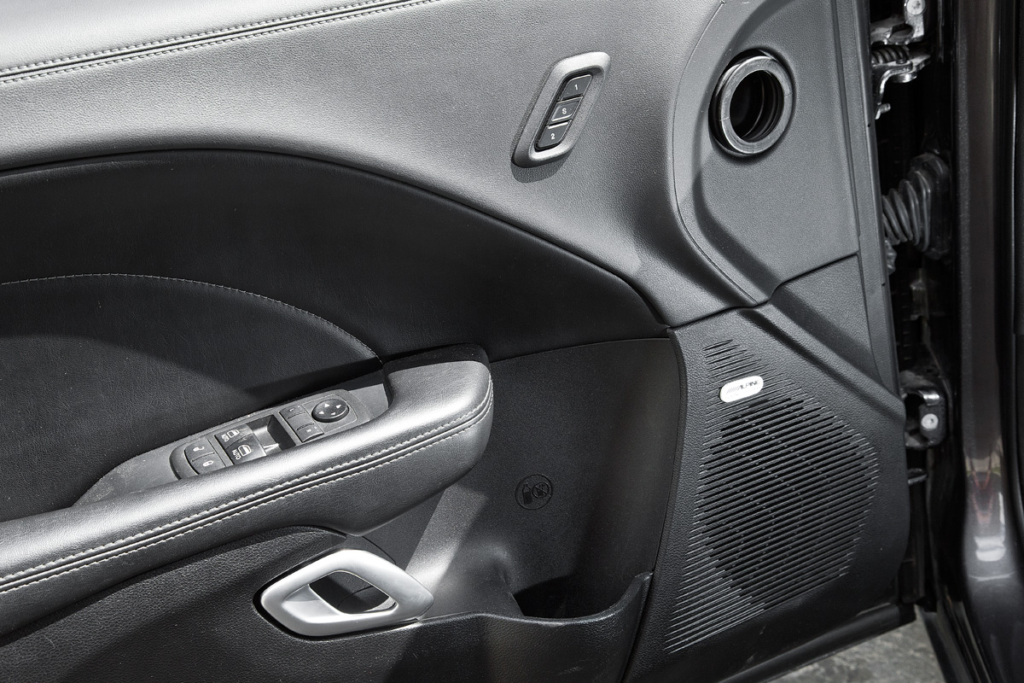
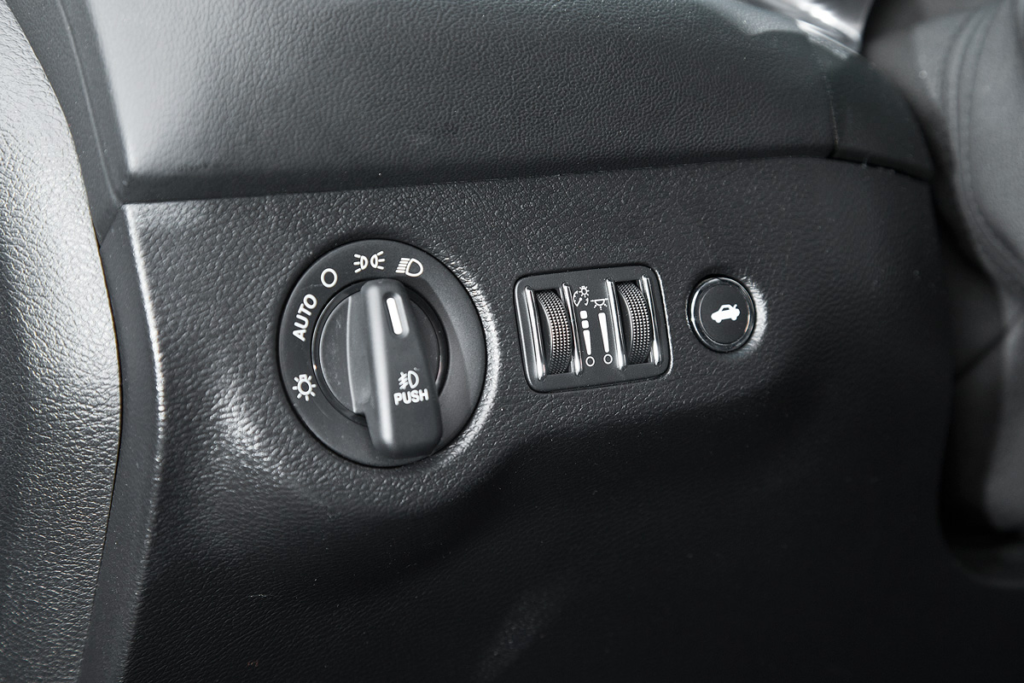
But let’s be honest: anything related to software feels stuck in 2008. The screen’s graphics are rudimentary, the camera resolution is a mere 0.1 megapixels, and the touchscreen is sluggish. Even my old 2012 BMW F30 3-Series was leagues ahead in these areas, let alone the Tesla Model 3 I currently drive. Dodge tries to keep pace, but it doesn’t always succeed.
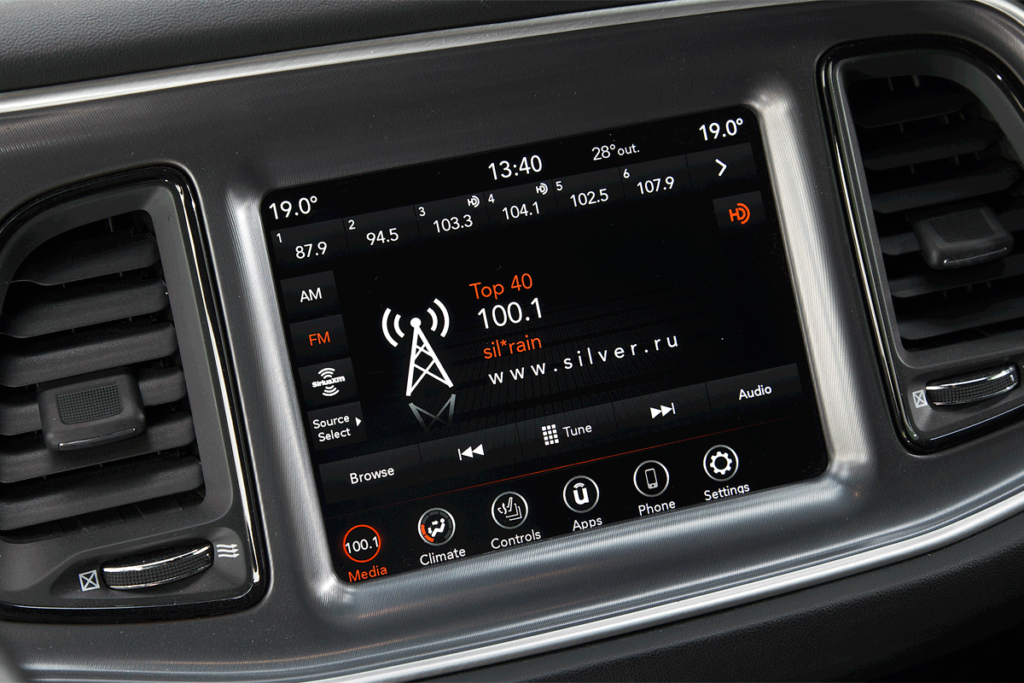
That said, the ergonomics are commendable. The deep, low-slung Recaro seats with suede upholstery are comfortable, and the steering wheel adjusts for height and reach. An average driver, around 1.8 meters tall, will feel at home. The high central tunnel and cluster of analog buttons under your right hand give you a cockpit-like sensation. Though, with the Challenger, it’s more like being in a fortified bunker: a dark cabin, narrow slit-like windows, and compact side mirrors—it all takes some getting used to.
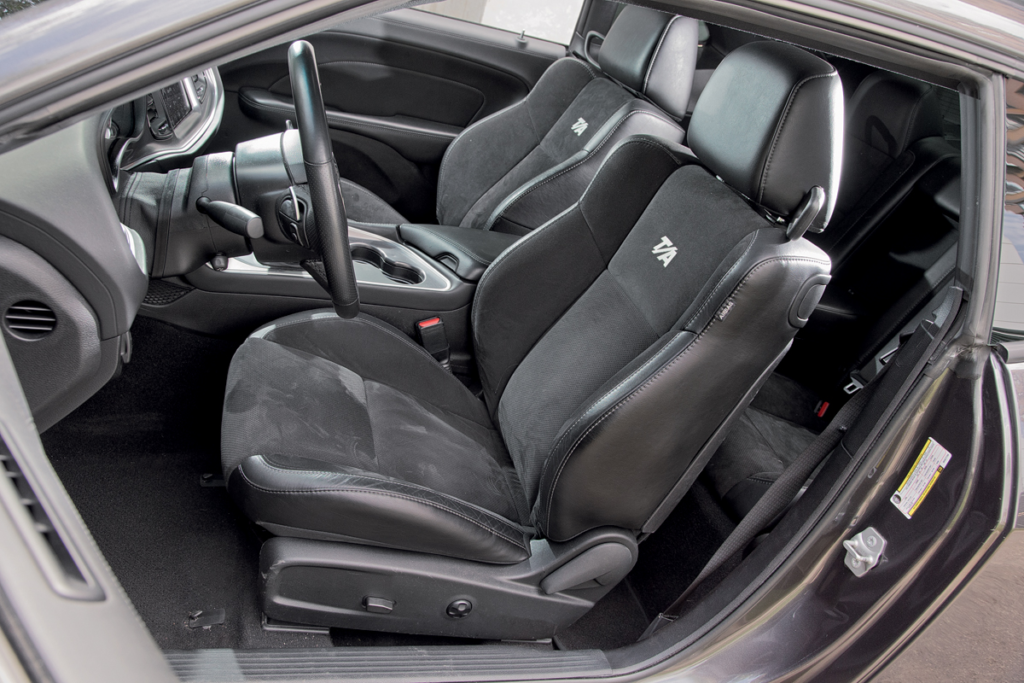
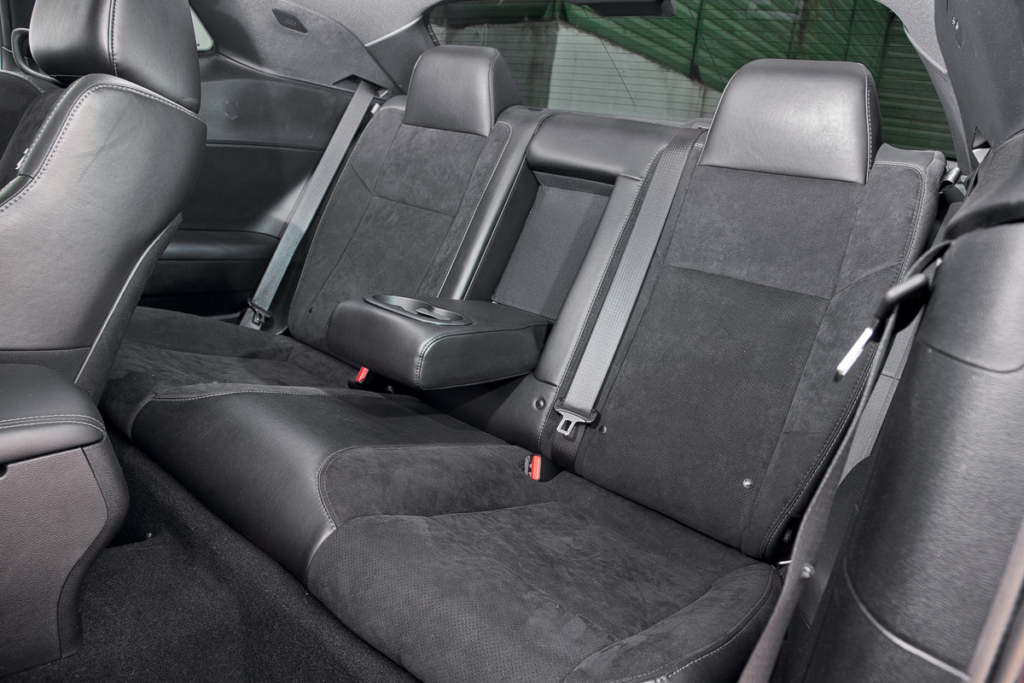
This car demands acclimatization in general, especially when it comes to the loud engine. Press the start button, and the four-hundred-horsepower V8 immediately roars to life, telling you, “Get ready, we’re about to have some fun!” But this aggressive growl can quickly become tiresome, especially when crawling through Moscow’s congested traffic just trying to get from point A to point B. Here, the Dodge feels like a caged tiger, ready to pounce but with nowhere to go.
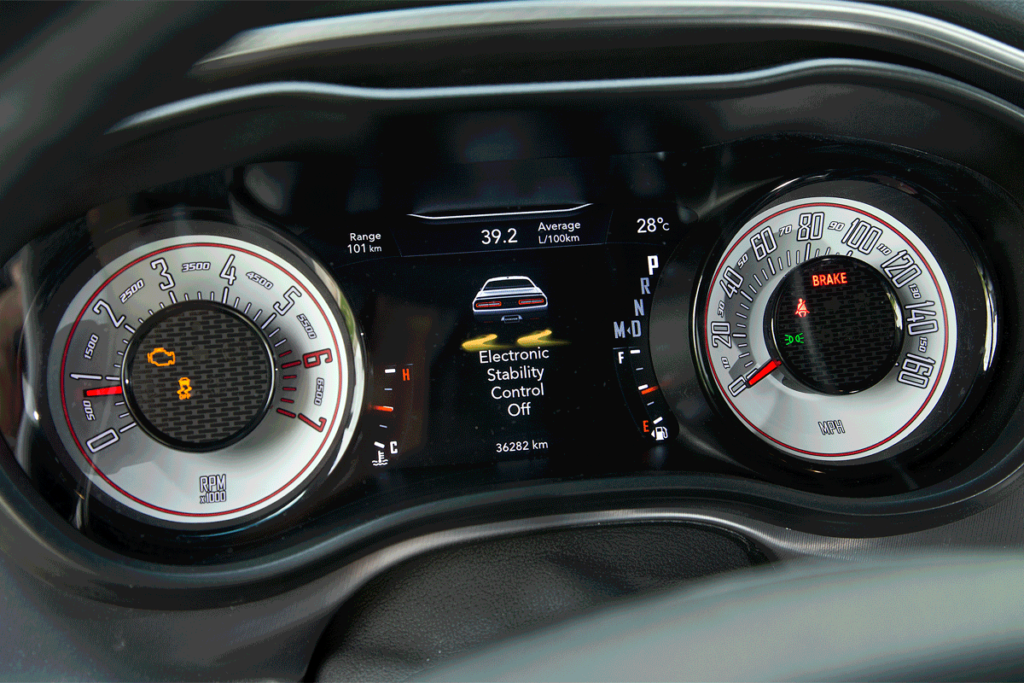
The engineers genuinely tried to make this coupe more suited for everyday driving. In comfort mode, the steering is light and somewhat vague, throttle response is muted, and braking is adequate. But the Challenger still feels like too much car—too big, too loud, too powerful, and too in-your-face. After a few days of driving it around Moscow, I found myself sitting on my balcony, thinking: “Who buys cars like this, especially in the city? Why do you need four hundred horses and five meters of rolling self-assertion? Or… is this just a sign of me getting older?”
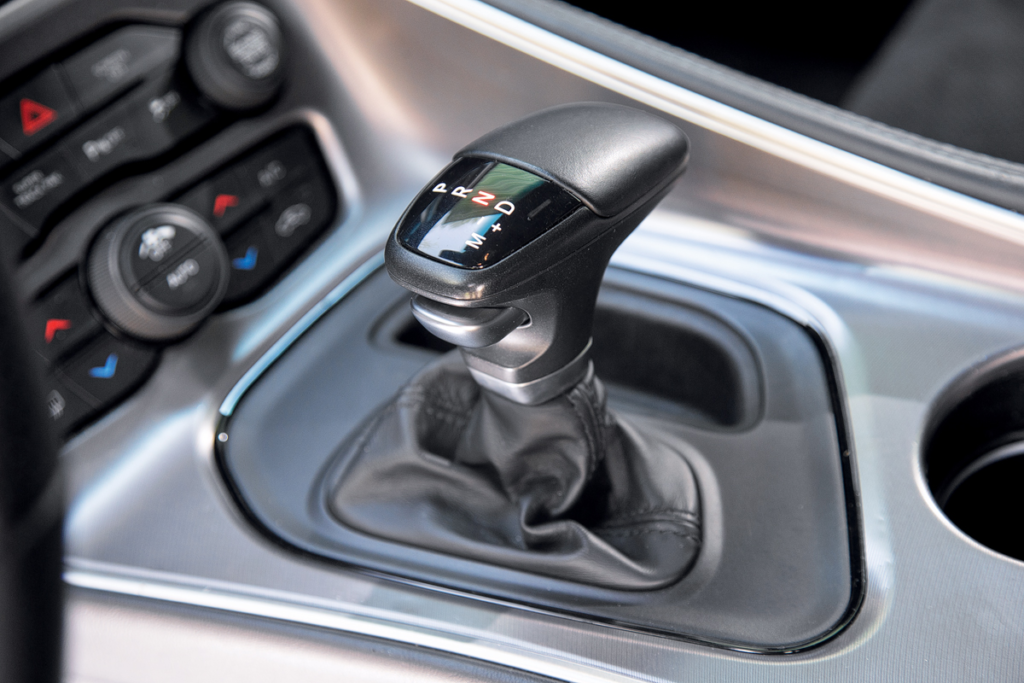
When I was 25, I once had the chance to drive an Audi R8 for a day, and I didn’t waste a single minute. I drove it everywhere and in every mode. The experience was so vivid that it’s still etched in my memory. So maybe it’s not the car—maybe it’s me? The only way to find out was to get off my balcony and head back to the parking lot.
The Dodge Challenger, however, never needs convincing. It’s always ready to rumble, so long as there’s fuel in the tank. All you need is a straight road to let the engine climb past four thousand RPM—and then you start to understand why people fall in love with these cars.
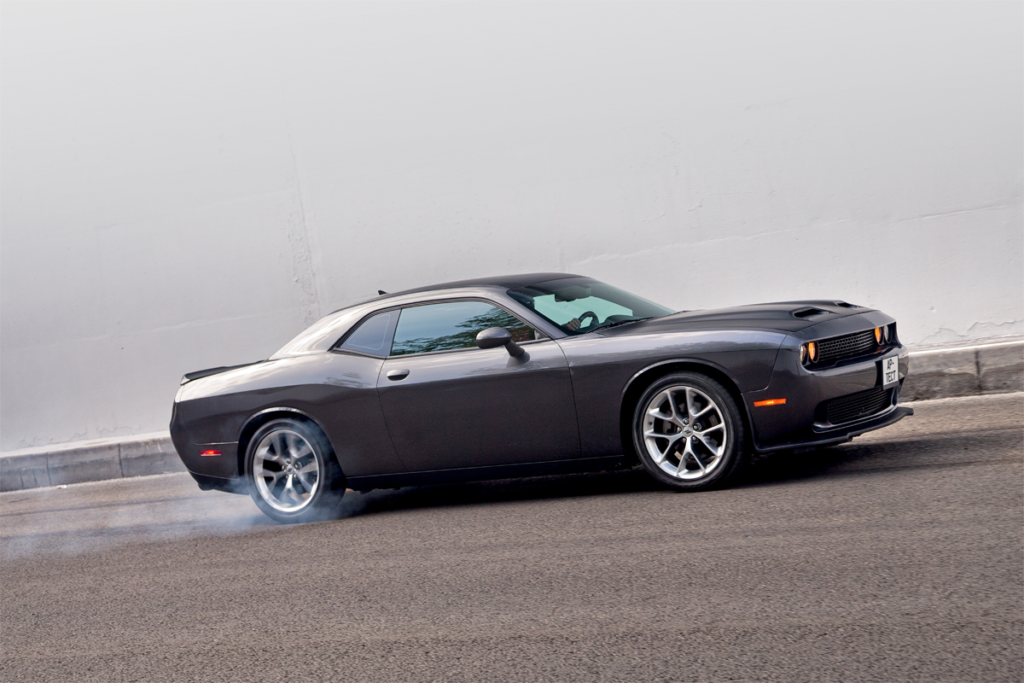
If you’re expecting me to rave about the deep, bassy growl of an iconic American V8, you might be disappointed. This Hemi doesn’t sound like my Cadillac Fleetwood Brougham, which has a similar engine size. Maybe it’s because of the exhaust modifications, but the Challenger doesn’t just growl—it screams! And it’s so loud that pedestrians dive behind trees, and curses rain down from nearby apartment windows. The animalistic roar is intoxicating, and you find yourself wanting to hear it over and over again—every time the light turns green, every time you hit an open road, every time you remember that the T/A trim includes launch control for the most dramatic starts possible. In those moments, you forget about performance stats and acceleration figures. It’s all about emotion.
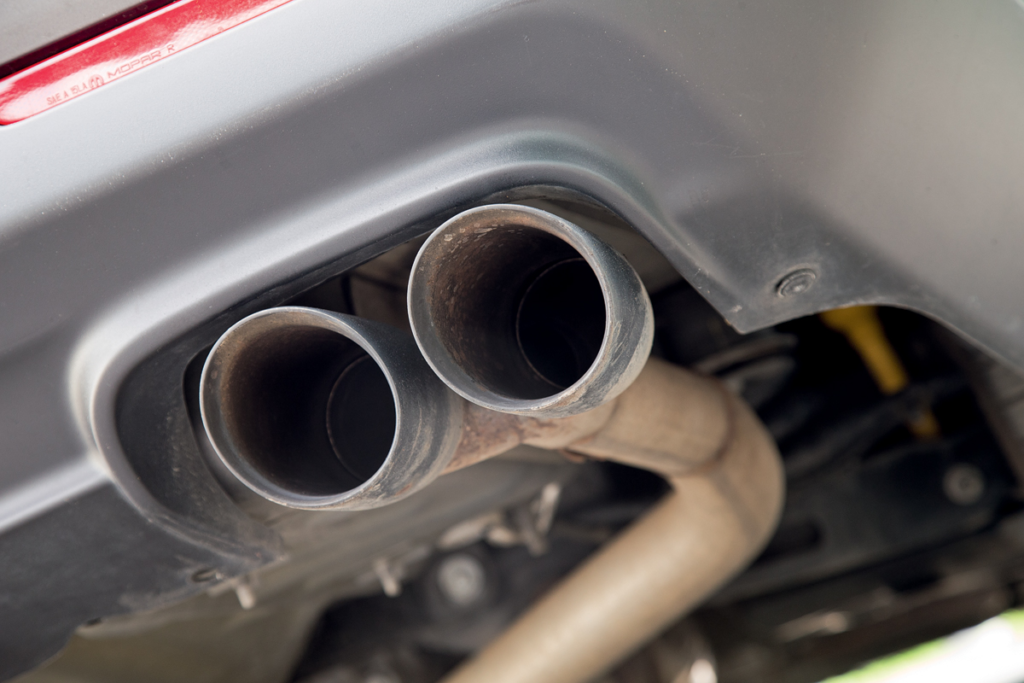
Yes, the Tesla Model 3 (and most modern electric cars) are faster, but the sterile acceleration they offer doesn’t compare to the visceral thrill of pressing the Challenger’s gas pedal. It’s no coincidence that the mute button sits next to the sport mode button. Ideally, there should also be a button to lower both side windows simultaneously, letting the roar flood the cabin.
However, it’s important to stay focused. Because no matter which mode you’re in, the Challenger—at least during takeoff—will want to spin its tires and kick out the rear. And if you hit a set of tram tracks mid-acceleration, you’d better be quick to catch the car. It’s exhilarating!
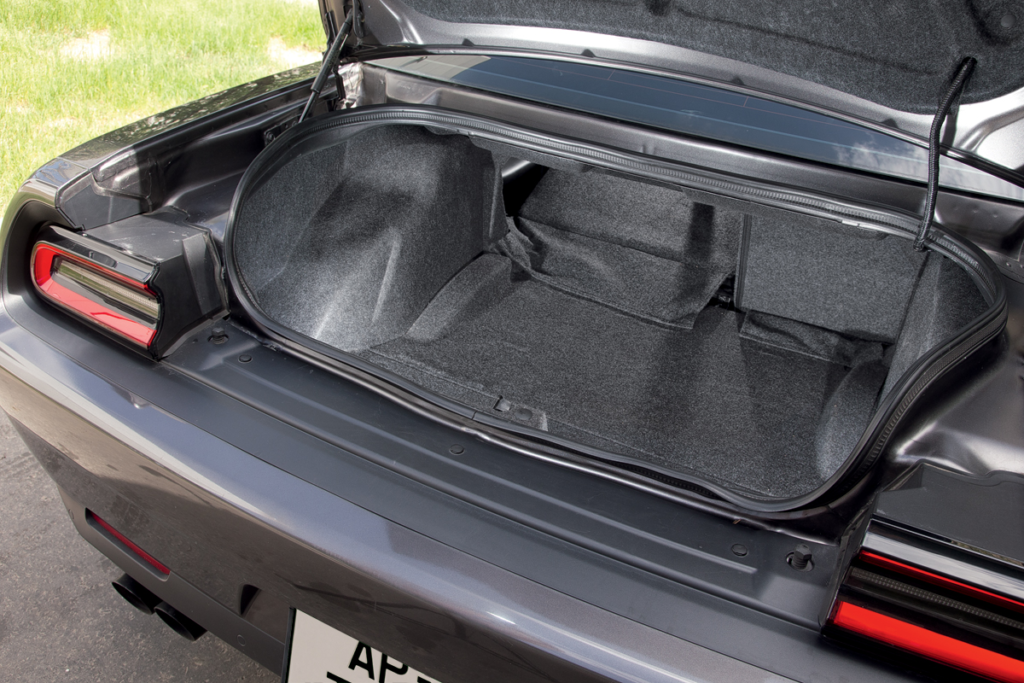

If you step back from the adrenaline rush, though, you’ll start to notice the details. For instance, the eight-speed ZF automatic transmission works well in most situations, but there’s a noticeable lag when you floor it. Sure, the Challenger has manual mode and paddle shifters, but how often do you really use them? After driving a Tesla, where transmission delays simply don’t exist, even Porsche’s PDK starts to feel slow in comparison.
On the other hand, the suspension surprises in a good way. Where’s the traditional American wallowing? Where’s the body roll and slackness? It’s nowhere to be found. But there’s a catch: road crews could use a fleet of these Dodges to inspect pavement quality. Potholes, seams, ruts—you suddenly realize just how many imperfections there are in Moscow’s roads. At least, there’s no wallowing over gentle waves and no seasickness. Better this than riding on gelatin.
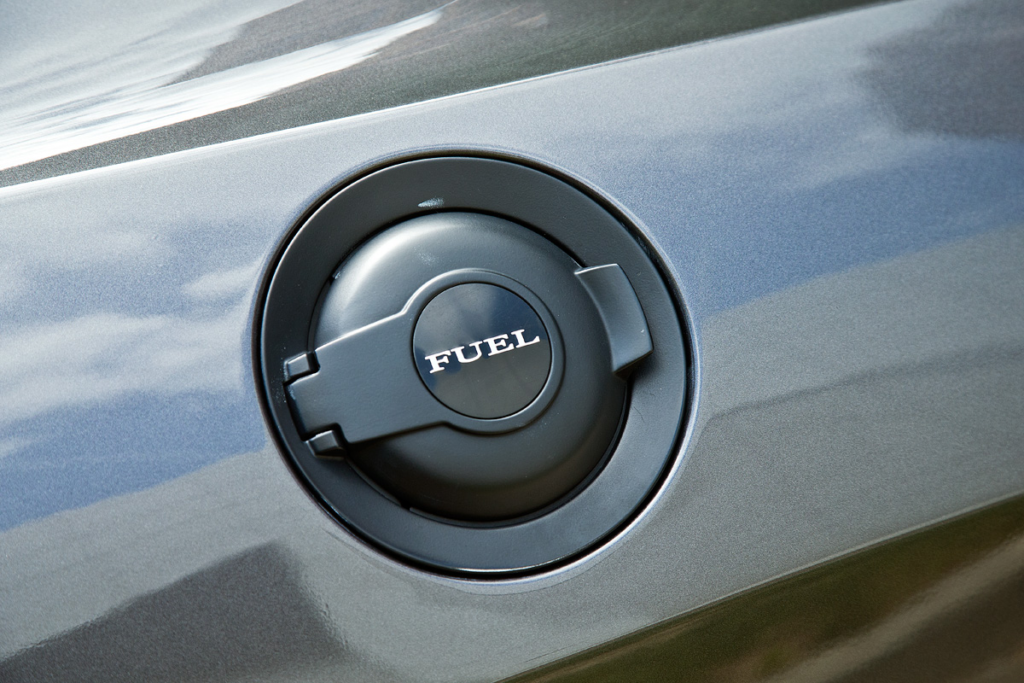
Handling? Expectations and reality clash once again: the Dodge drives better than I thought it would. Even in the light comfort mode, you have a good sense of what’s happening with the front wheels and their angle of turn. But there’s no urge to push the limits in corners. No matter which buttons you press or what driving mode you choose, the Challenger is still a huge coupe weighing nearly two tons. Physics doesn’t bend easily—especially without adaptive suspension, which this Dodge lacks. It uses passive dampers and springs. The brakes, with optional perforated discs, do their best, but they’re not invincible. Enter a corner too fast, and you’ll overshoot. Overdo it on the throttle out of a bend, and you’ll be catching the rear axle. Classic. After a couple of near misses, you’ll probably think twice before pushing this American beast to its limits again.
So what does the Challenger do best?
It lets you revel in the sound of the engine! Correct the rear axle on takeoff. Feel the raw masculinity that it embodies. That’s where the Challenger excels. But is that really enough? After all, even on the used market, eight-cylinder Challengers start at around 4 million rubles, and prices can easily exceed 10 million.
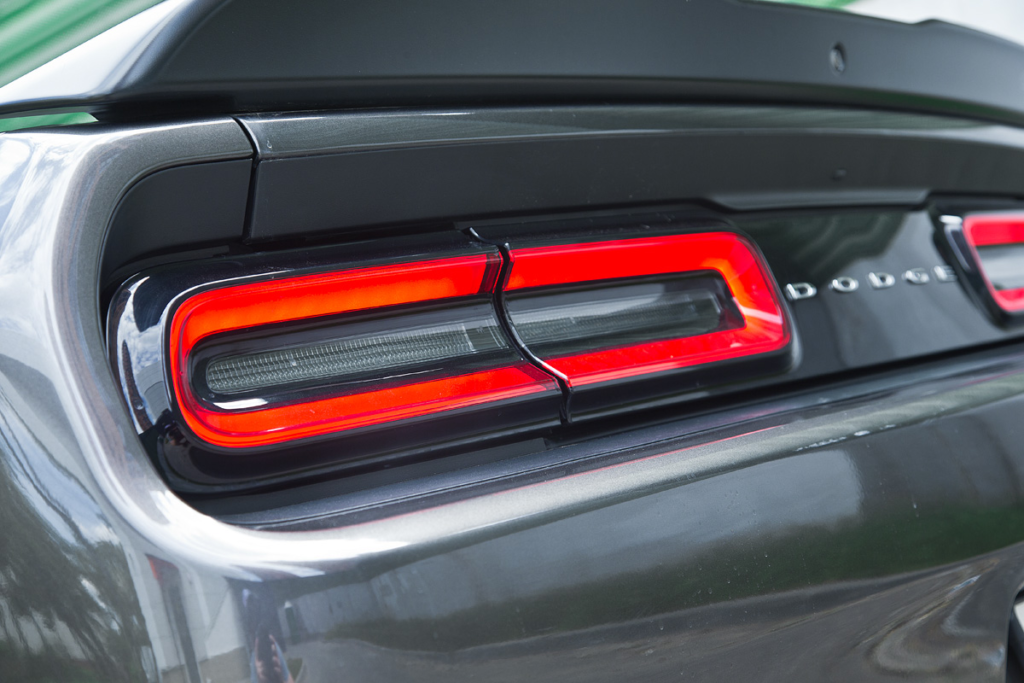
As I handed the keys back to the owner, Nikolai, I couldn’t resist asking him why, after selling his six-cylinder Challenger SXT, he chose to buy another American car—this time a more powerful R/T. His answer, as expected, had nothing to do with finances. Nikolai had briefly switched to a Volvo XC60 crossover but couldn’t stand driving it. Sure, it was comfortable and versatile. But it was also boring to death. It wasn’t a car, just transportation. So now, once again, a five-meter American muscle car with a 5.7-liter V8 stands parked in his Moscow courtyard.

These cars won’t be made anymore. And that’s a loss! Dodge didn’t just retire the Challenger name (production ended last December), but they also abandoned V8 engines entirely. The Hemi family will cease production this year, meaning no more V8s in Jeep, Ram, or Chrysler vehicles. The new Dodge Charger, available as a three-door or five-door liftback, comes with either a turbocharged inline-six or electric power. It’s faster, more efficient, and more eco-friendly, but muscle cars have always been about something else—something future Dodges won’t be able to offer.
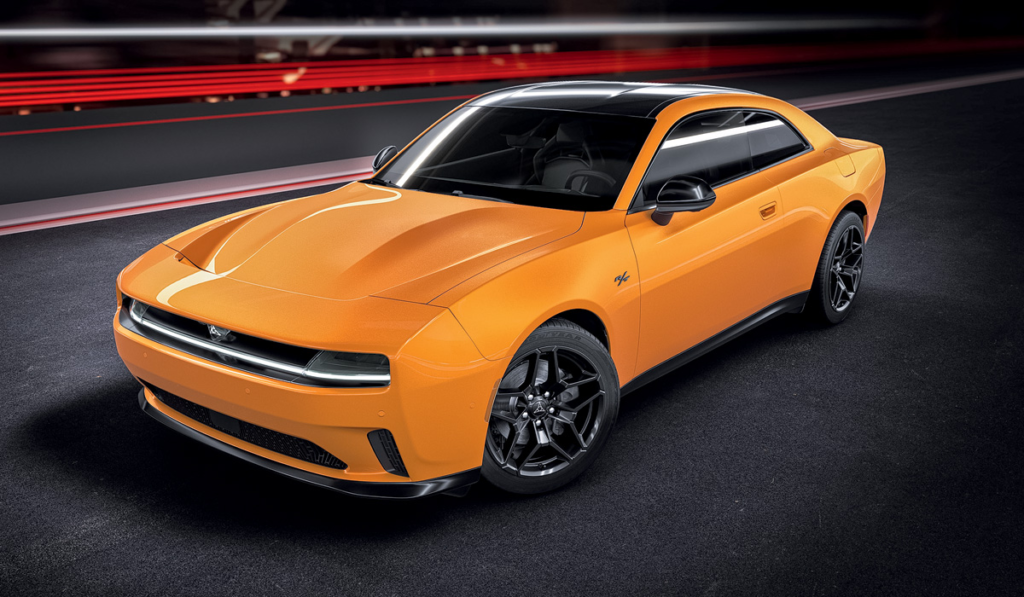
Chevrolet Camaro’s fate is even bleaker: it was discontinued without any successor. These decisions seem all the more puzzling when you consider that Ford has no intention of giving up on V8 engines. Ford’s CEO, Jim Farley, recently stated that they will keep installing “eights” in Mustangs as long as “God and politicians allow.” Now that’s an approach worthy of respect!
But let’s not despair just yet. Stellantis, Dodge’s parent company, has a history of reversing decisions—even ones that have already been implemented. So, who knows? After a short break, V8 engines might return, when they realize that selling emotion without them is impossible. Let’s wait and see.

| Specification | Details |
|---|---|
| Car Model | Dodge Challenger R/T |
| Body Type | Two-door coupe |
| Number of Seats | 5 |
| Dimensions (mm) – Length | 5027 |
| Dimensions (mm) – Width | 1923 |
| Dimensions (mm) – Height | 1465 |
| Wheelbase (mm) | 2946 |
| Track Front/Rear (mm) | 1610/1620 |
| Drag Coefficient (Cx) | 0.365 |
| Trunk Volume (L) | 459 |
| Curb Weight (kg) | 1889 |
| Gross Vehicle Weight (kg) | 2404 |
| Engine Type | Petrol, with direct injection |
| Engine Position | Front, longitudinal |
| Number and Arrangement of Cylinders | 8, V-shaped |
| Engine Displacement (cc) | 5654 |
| Cylinder Diameter/Piston Stroke (mm) | 99.5/90.9 |
| Compression Ratio | 10.5:1 |
| Number of Valves | 16 |
| Max Power (hp/kW/rpm) | 377/277/5200 |
| Max Torque (Nm/rpm) | 542/4400 |
| Transmission | Automatic, 8-speed |
| Drive Type | Rear |
| Front Suspension | Independent, spring, double wishbone |
| Rear Suspension | Independent, spring, multi-link |
| Brakes | Disc, ventilated |
| Base Tire Dimensions | 245/45 ZR20 |
| Top Speed (km/h) | n/a* |
| Acceleration 0-100 km/h (s) | n/a |
| Fuel Consumption – Urban (L/100 km) | 14.7 |
| Fuel Consumption – Extra Urban (L/100 km) | 9.4 |
| Fuel Consumption – Combined (L/100 km) | 12.4 |
| Fuel Tank Capacity (L) | 70 |
| Fuel Type | Petrol AI-95 |
n/a* – No data available.
Photo: Dmitry Piterskiy | Dodge
This is a translation. You can read the original article here: Анти-Tesla: знакомство и прощание с восьмицилиндровым купе Dodge Challenger

Published October 31, 2024 • 12m to read

